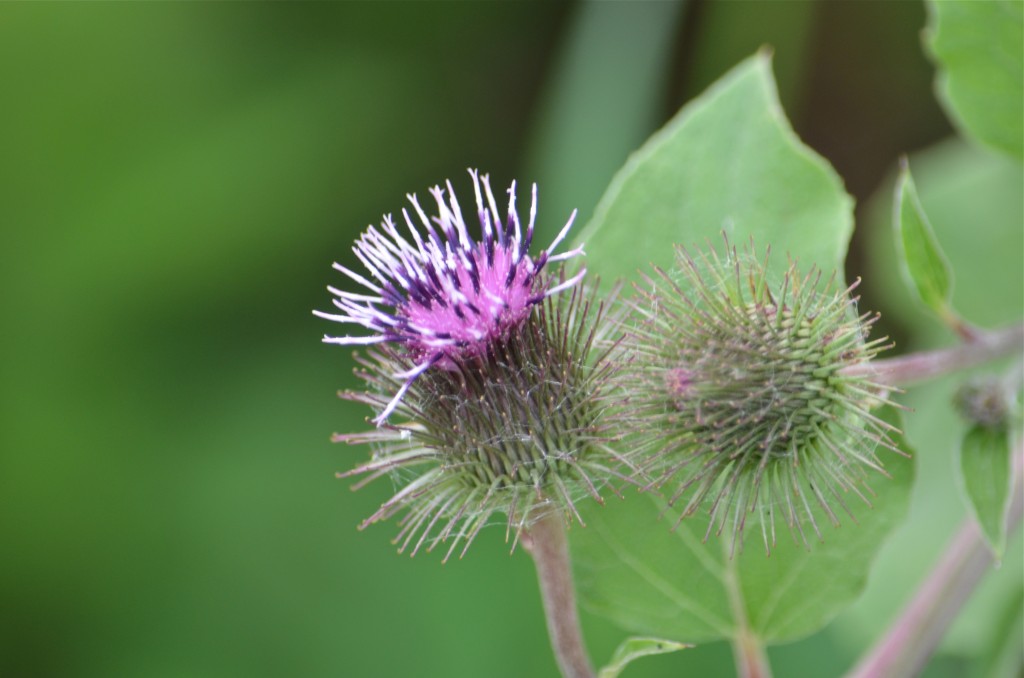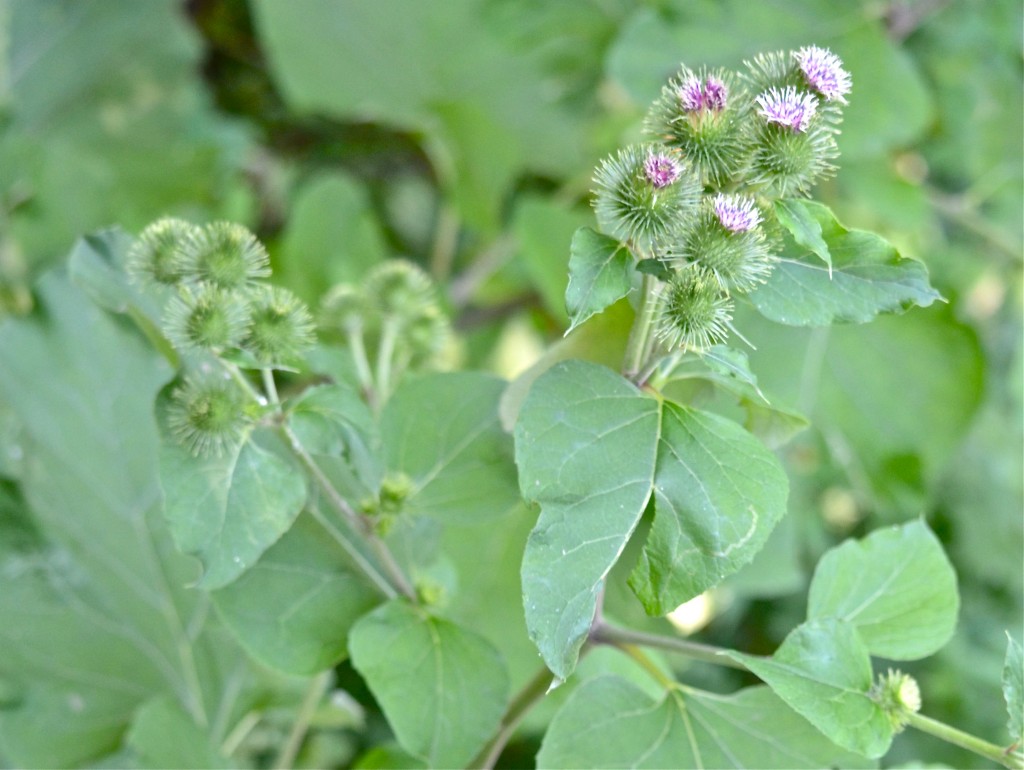Have seen loads of white campion and bladder campion, but this is the only little plant of this kind that I’ve noted.
Pink Campion (a hybrid of Silene dioica and S. latifolia — red and white campions)

It had been a couple of weeks since I visited this area, and the flora had really changed… so many new things in blossom, and so many formerly flowering plants already browning or sprouting seed pods. There is a big stand of this flower and I’m excited to discover that it’s wild catnip! Must collect a few sprigs for the cats in my life. The most drought-resistant member of the Mint family. According to Illinoiswildflowers, “Apparently, a chemical in the foliage produces a pleasant intoxicating effect in cats, somewhat akin to the effect of marijuana on humans. As a result, plants in residential areas may display signs of damage from cats rolling in the foliage.” Native to Eurasia.
Catnip (Nepeta cataria)
There are many kinds of asters. This one is distinguished by how tall it is, with the flowers at my eye level, clasping leaves, and largish flowers, 1 – 2 inches wide. Native. Aster family.
New England Aster (Symphyotrichum novae-angliae)
Bonus picture from the lake (this is the Wellesley College campus):


These can get to be 9 feet tall. All parts were used medicinally — leaves, roots, flowers, and seeds. One way to distinguish it from common burdock is that the flowers are on little stalks, whereas in common burdock the flowers cluster directly on the main stem. Aster family. Native to Europe, Asia. Cultivated in Japan because they like to eat it, especially the roots, julienned and braised with a sauce or pickled in sushi, or as a snack chip.
Great Burdock, Beggar’s Buttons (Arcticum lappa)
Bonus: Most of these are purple, but there was also a white one: